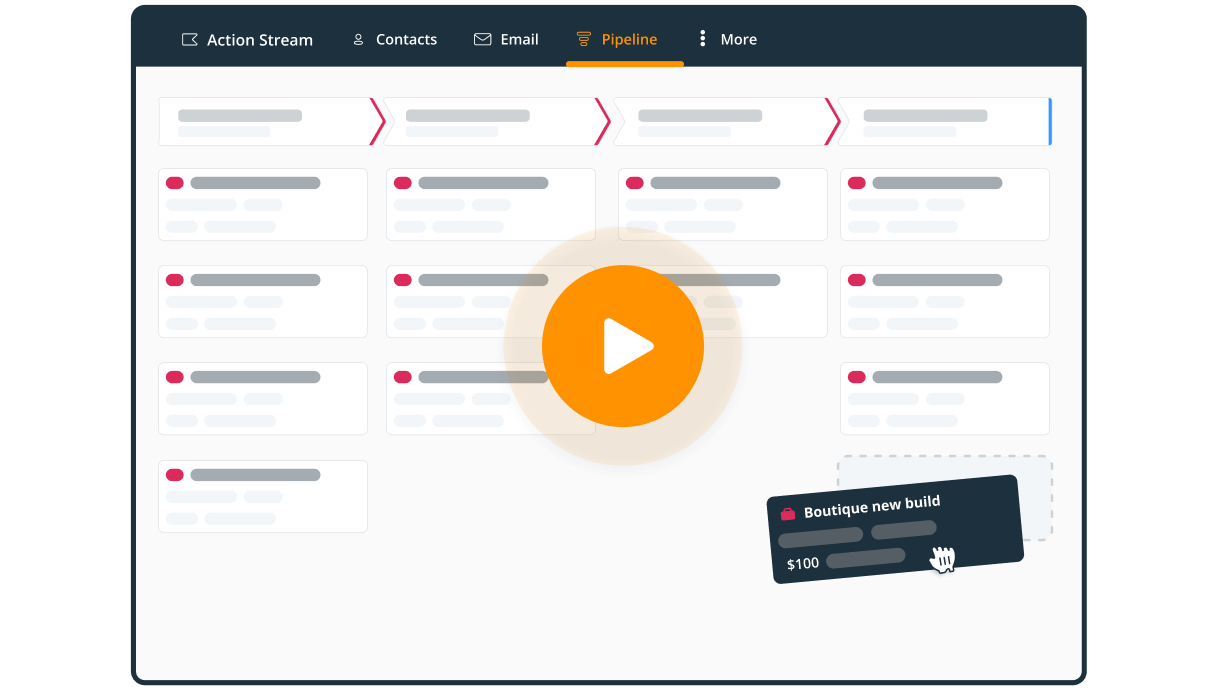
A cloud-based SaaS, software-as-a-service, doesn’t store data on your computer and often doesn’t even require you to install anything.
SaaS products have become increasingly popular at the beginning of this century and continue growing in popularity.
The cost of starting your own SaaS business is decreasing, so more and more entrepreneurs found their own SaaS companies.
In this blog post, we’ll look at 7 ways of how you can sell your SaaS software more efficiently.
7 tips on how to sell SaaS software
Diving into the world of SaaS sales can be a bit like exploring a new city.
It’s exciting but also a tad overwhelming, and you might not know the best places to start.
So here are 7 practical tips to help you sell your SaaS software. Whether you’re the founder of a SaaS startup or a sales rep looking to polish your approach, these insights will help you get the ball rolling!
1. Master the art of convincing
In SaaS, salespeople often find themselves under constant pressure, grappling with high levels of stress.
One of their primary objectives revolves around persuading key decision-makers to invest in the SaaS products they sell.
Acting as a middle person between their SaaS business and potential clients, salespeople need to analyze how a sale could mutually benefit both parties. It’s all about identifying these benefits and correctly conveying them.
Reaching decision-makers is not always easy. In SaaS, salespeople usually employ various strategies, such as cold calling or email outreach. Once they manage to connect with a decision-maker, the interaction leads to one of the three outcomes:
- They might reject the sales pitch.
- They might express some interest but need time to think.
- They might respond enthusiastically and initiate the purchasing process straight away.
In SaaS sales, the latter scenario happens rarely.
That’s why you need to master the art of persuasion.
2. Clearly communicate the value
The way of selling has changed since SaaS products entered the market.
It’s a matter of selling something that most people don’t realize they need yet, and the salesperson’s role consists of correctly identifying the need—and then clearly communicating how the product can address this need.
The value created should be important not only now, but also in the long run.
In many cases, all you need is for the user to try your SaaS tool for a couple of days or weeks to actually see that the tool is helpful. That’s probably why many companies offer free tiers and freemium versions of their products.
But even getting people to start using a free tool can be hard. That is why you have to be clear when you are establishing the benefits and value of your product.
So make sure you spend some time thinking about the best ways to communicate the value of your SaaS product.
3. Sell ROI, not the value
While it’s important to clearly communicate the value, it’s a very abstract concept and it might be difficult to sell.
That’s why you can focus on return on investment (ROI) instead.
The SaaS world loves numbers.
But what really resonates with people isn’t just the numbers. It’s about the transparency that ROI numbers bring to your potential clients.
Instead of pitching your SaaS product solely based on its value, you can focus on the tangible benefits it offers. Emphasize how using your product your clients can drastically cut down their costs or boost productivity. Support your claims with real numbers.
4. Focus on relationships more than sales
It might sound like a bit of a cliché, but as a salesperson, you need to make sure your prospect feels comfortable with you.
Sharing a laugh, trusting your gut—these things really matter. When someone isn’t quite sold on what you’re offering, it often comes down to trust. So, every time you reach out, focus on building that trust instead of thinking only about closing the deal.
There are different ways of how you can build this trust. Try being myself and keep it genuine. People won’t always go for your SaaS product because it’s the absolute best, but they might choose it because they feel a connection with you, they trust you.
It’s all about striking that balance between selling and building relationships. Both are important—and they are not mutually exclusive.
5. Adapt to your prospects
It’s important to stay genuine and true to yourself but it’s no less important to understand that in SaaS sales, you’re dealing with people—and they have their preferences, communication styles, and whatever not.
The best salespeople know how to adapt their approach depending on who they’re interacting with.
They’re like chameleons, constantly adjusting their style to fit the person they’re talking to. And the thing is, they actually enjoy it.
They understand that speaking the prospect’s language is crucial for building rapport and making a sale. It’s not about being fake; it’s about being versatile and meeting people where they are.
6. Use a CRM from early days
On a good day, a sales rep can reach out to more than 30 people each day. Of course, it’s impossible to remember every single conversation in detail.
That’s where a sales CRM system becomes indispensable. It’s not just a tool for keeping track of who to call next; it’s also about remembering the why behind each call.
Besides, little details, like correctly pronouncing their name or recalling a joke, can make a significant difference. It shows that you value these interactions and care about maintaining a genuine connection.
Most of the selling time in SaaS is split between phone calls, emails, and working within the CRM. The CRM serves as a hub for tracking all sales activities and interactions.
7. Find your SaaS champions
One of the main challenges in SaaS sales is convincing decision-makers to switch to a new tool.
Adopting a new tool often means adapting to new processes and new ways of doing things. As you can probably guess, habits are difficult to change.
When selling your SaaS product to a business, make an effort to find your product champion within the company.
This is the person who will then talk to different stakeholders and champion your product. This approach has yielded positive results, but it does require salespeople to build deeper relationships with prospects and leads.
Final thoughts
Selling SaaS software is all about connecting with your potential customers on a human level and solving their problems with your product.
Always remember that persistence and learning from each interaction will lead you to success.
Good luck, and here’s to closing many sales!








